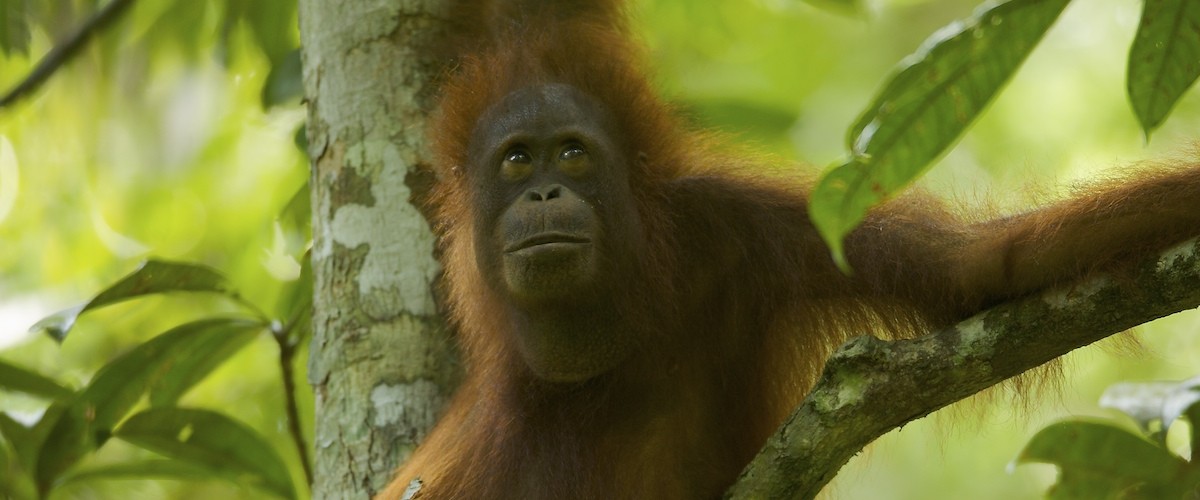By Muhammad Syainullah, GPOCP Lab Assistant
Hi, my name is Muhammad Syainullah, but I go by Syai. I am a laboratory assistant at the Cabang Panti Research Station, in Gunung Palung National Park. Our project focuses on the behavior and physiology of wild orangutans. One of the orangutans we study is Alfred, or as I call him, not only the King, but the Legitimate King! I call him this because I met Alfred when I first started working at Cabang Panti and to this day, he remains the dominate male in the area.
 |
|
Alfred, the primary dominant male in the Cabang Panti trail system.
|
We estimate that Alfred is between 25 and 30 years old. It is difficult to determine the age of wild male orangutans. Males tend to leave their mother, and her home range, and travel to a new home range around the time of puberty. This pattern is called ‘male dispersal,’ and it is very common in primates. When one sex disperses at puberty, it keeps closely related kin from mating with each other. Because, male orangutans disperse, we cannot be sure how old an adult male is when we first see him in our study system. Alfred was first seen in the Cabang Panti study area in April of 2015. At that time, he already had large flanges with scars on them. In captivity (where male age is known), most males have been seen to develop flanges from 9 to 18 years of age, but some never develop them and remain unflanged their whole lives! This is an unusual phenomenon in mammals called male bi-maturism. So there is a lot of variation in the age at which males could develop these flanges! Since Alfred already had flanges, and he had flanges for a long enough time to get into at least one fight with another male that wounded him and created scars, the research team estimated his age to be at least twenty or twenty-five when he was first seen.
 |
| A close up of Alfred and his flanges. |
One day, while searching for orangutans in the forest, I was excited to find a young female. I was preparing to follow her, when I realized that Alfred was right behind her! Even though he is quite habituated to us following him, and wild orangutans do not attack observers, I was still intimidated to be that close. Flanged males weigh approximately 60-85 kg and travel terrestrially more often than other orangutans. Since I was new to the project and less experienced being around such large creatures, I immediately backed away from him to respect his space. (When following orangutans, we always keep a safe distance of at least 10 meters, for the safety of both the human observers and the orangutan.)
 |
|
Syai searching for orangutans in the Cabang Panti trail system of Gunung Palung National Park. Photo by Muhammad Syainullah.
|
One of the things I find most fascinating is how long Alfred has remained the primary male in the Cabang Panti trail system. He has been the dominant male here the whole time that I have been at CPRS. We see many flanged males throughout the year in the study system, but Alfred is the one we see the most. During the most recent mast fruiting event, there was one day in which 6 different males were seen or heard (by the location of their long calls) all within one hour in the study system!
Over the last couple of years, I have learned many interesting things about Alfred, about his kingdom, and about other orangutans. But the biggest lesson of all is that we must protect orangutan habitat to protect the species!






